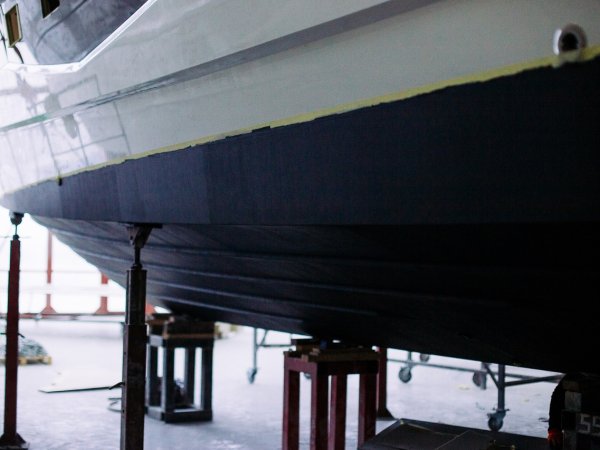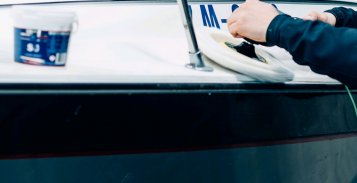
HARD ANTIFOULING is recommended to protect areas below the water line. Suitable for all kind of motorboats up to 70 knots speed. It can be also used on sailboats.
Recommended for salt, fresh and mixed water. Due to increased hardness is resistance to damage.
HARD ANTIFOULING Sea-Line can be applied on hulls made of laminate, steel, wooden. Don’t use on aluminium.
Paint in colour : red, blue and black in 0,75 l or 2,5 l can.
NEW COLOUR ALUPLUS SELF-POLISHING. For people, who search paint with high efficiency and for area on big fouling, we recommended self polishing antifouling ALUPLUS. In season 2018 we add to offer colors blue and black. Available packing in can 0,75l and 2,5 l. The output and efficiency of the paint is 30% higher than with traditional products. It can be applied on hulls made of aluminium.
THINNER FOR ANTIFOULING Thinner for antifouling it’s last product in completing the offer antifouling paint. Thinner it’s product for all antifouling paint Sea-Line. We don’t recommended thinning paint more 5%.

Ci spiace, ma questo articolo è disponibile soltanto in Polacco.

Come and join us at METSTRADE 2023, METSTRADE the best event for marine industry professionals, happening from November 15th to […]

Visit us and our production plant without traveling

New in the 2023 season is a new polishing wool The new black and white polishing pads in premium quality […]
Sea-Line HARD and Sea-Line self-polishing antifouling are not intended for aluminum surfaces. They include copper oxide, which in contact with aluminum causes galvanic corrosion. Especially on aluminum, we offer ALU-PLUS self-polishing anti-fouling paint, which, in addition to excellent adhesion to aluminum, is also 30% more effective than traditional anti-fouling paints.

Il patch e compensare le irregolarità derivanti da danni durante la produzione

Barca protezione superficiale contro l’influenza di azioni distruttive di osmosi e la corrosione in ambienti difficili

Protezione contro l’acqua e contro gli effetti negativi delle radiazioni UV

Proteggere la parte inferiore della barca prima-tedesco ricoperta di alghe e conchiglie. La prevenzione dell’azione di acqua.

Rimozione efficace di ritenzione graffi, di aggiornamento e il colore del mantello gel o lacca

Laminazione, incollaggio e tappatura perdite

Per il riempimento di piccole fessure e ubyt gemme in gelcoat

Una gamma di prodotti utili quando si lavora costruttore di barche